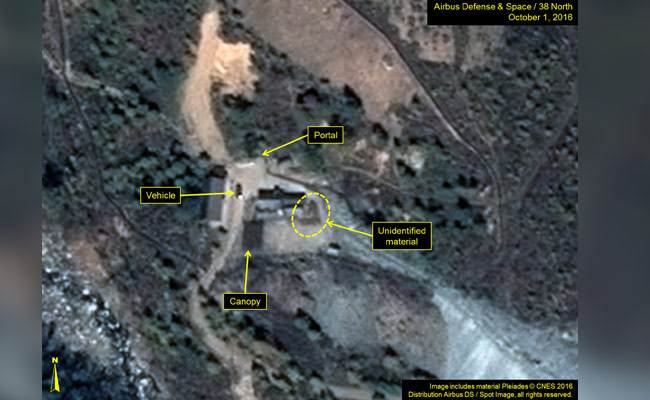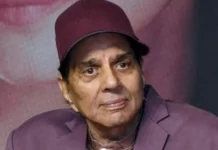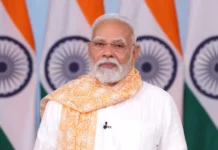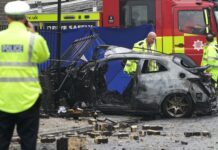 SEOUL, North Korea: Invited foreign journalists began a long journey up North Korea’s east coast Wednesday to witness the slated destruction of the reclusive regime’s nuclear test site, a high profile gesture on the road to a summit with the US that Donald Trump now says might not happen.
SEOUL, North Korea: Invited foreign journalists began a long journey up North Korea’s east coast Wednesday to witness the slated destruction of the reclusive regime’s nuclear test site, a high profile gesture on the road to a summit with the US that Donald Trump now says might not happen.
In a surprise announcement Pyongyang said earlier this month that it planned to “completely” destroy the Punggye-ri facility in the country’s northeast, a move welcomed by Washington and Seoul.
Punggye-ri has been the staging ground for all six of the North’s nuclear tests, including its latest and by far most powerful one in September last year, which Pyongyang said was an H-bomb.
The demolition is due to take place sometime between Thursday and Friday, depending on the weather.
The North has portrayed the destruction on the test site as a goodwill gesture ahead of planned June 12 summit between Kim and Trump in Singapore.
But doubts have since been cast by both sides on whether that potentially historic meeting will take place.
Last week Pyongyang threatened to pull out if Washington pressed for its unilateral nuclear disarmament. Trump also said the meeting could be delayed as he met with South Korean leader Moon Jae-in in Washington on Tuesday.
“There are certain conditions we want to happen. I think we’ll get those conditions. And if we don’t, we won’t have the meeting,” he told reporters, without elaborating on what those conditions might be.
Politically, Trump has invested heavily in the success of his meeting with Kim, and so privately most US officials, as well as outside observers, believe it will go ahead.
But as the date draws near, Trump’s divergence from his top aides, the differences between the two sides and these high stakes are coming into sharp relief.
Washington has made it clear it wants to see the “complete, verifiable and irreversible denuclearization” of the North.
Pyongyang has vowed it will never give up its nuclear deterrence until it feels safe from what it terms US aggression.
“Everything is on thin ice,” Koo Kab-woo, a professor at the University of North Korean Studies in Seoul, told AFP.
“Trump wants a swift denuclearization, something that will be done within his first term in office. In that case, he has to provide North Korea with a corresponding, swift security guarantee.” Observers will be watching the nuclear test site destruction ceremony closely for any clues to the North’s mood.
Experts are divided over whether the demolition will render the site useless. Sceptics say the site has already outlived its usefulness with six successful nuclear tests in the bag and can be quickly rebuilt if needed.
Previous similar gestures by the North were rapidly reversed when the international mood soured.
But others say the fact that North Korea agreed to destroy the site without preconditions or asking for something in return from Washington is significant.
Go Myong-hyun, an analyst at the Asan Institute for Policy Studies, said both sides were playing “a game of chicken” in the run-up to the summit “to gain an upper hand in negotiations”.
He said the destruction of the site would win Pyongyang international sympathy even if the summit collapses.
“North Korea can say to the international community that it did its best to achieve denuclearization through negotiations but was pressured by the United States and couldn’t do it,” he said.
A handful of foreign journalists from China, the US, Britain, Russia and South Korea were invited to attend the demolition ceremony.
They set off from the North Korean city of Wonsan late Wednesday afternoon, according to tweets from journalists within the group who added they were unlikely to have any internet or mobile phone coverage until they return to the city. PTI





